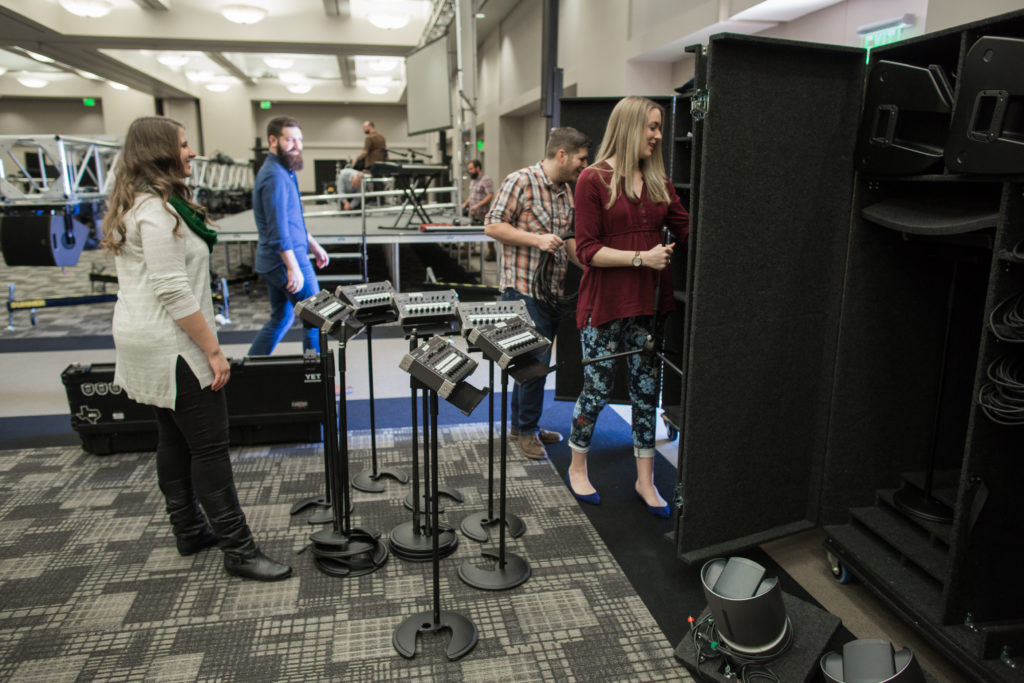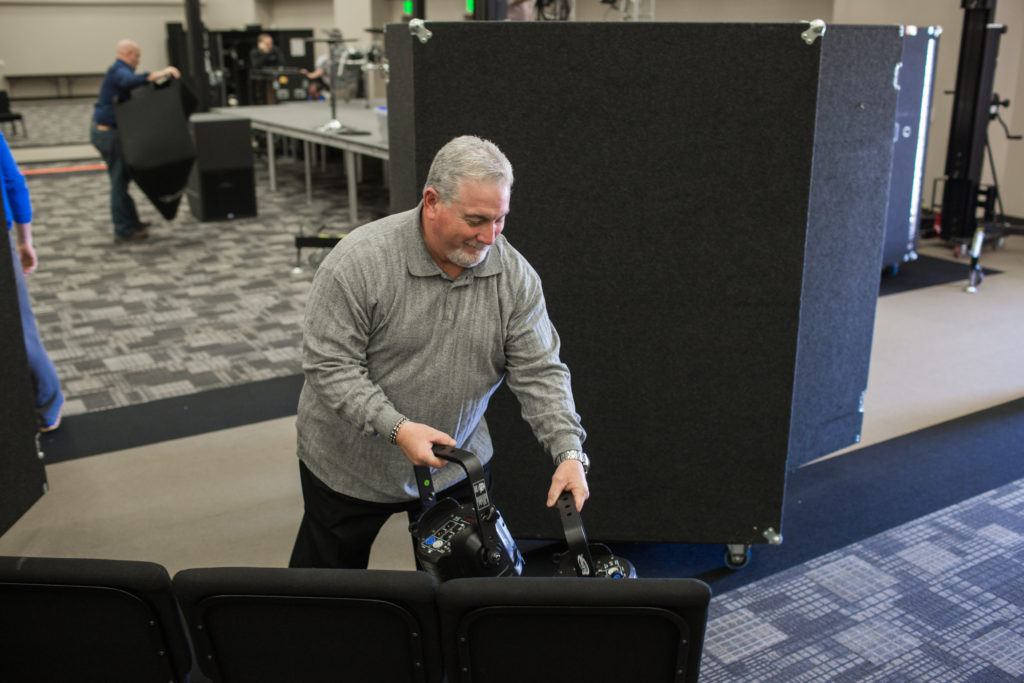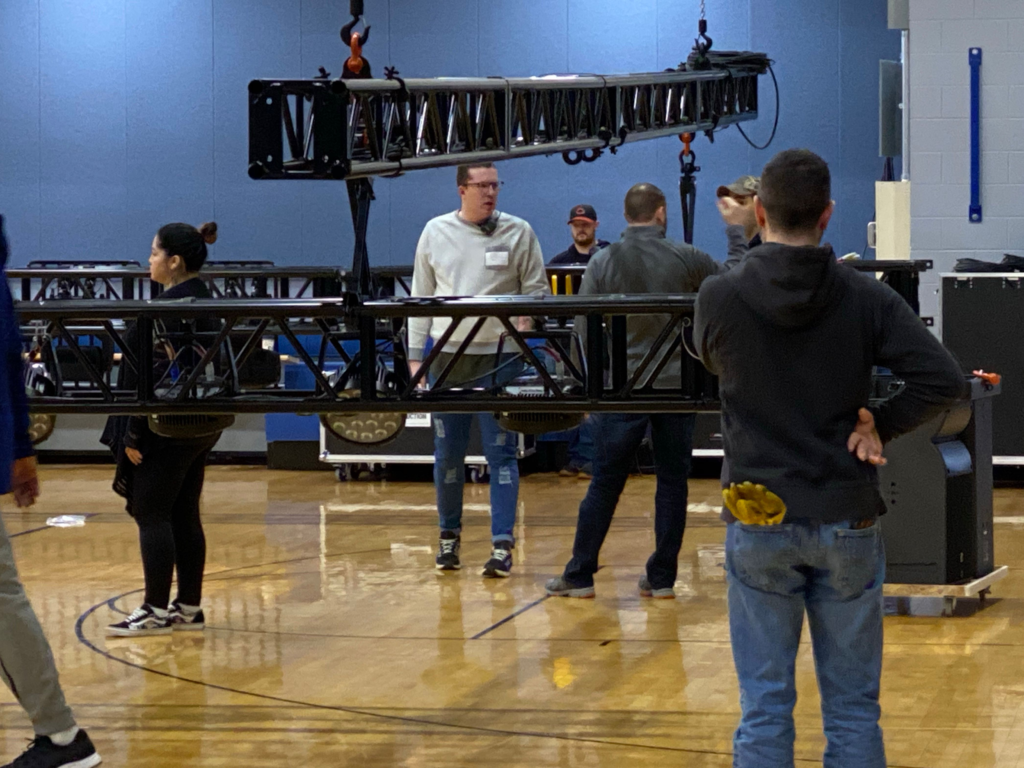Steward your resources wisely when you perfect your portable church volunteer structure.
A common question related to church volunteers is, “How many people do we need?” And more often than not, leaders without the right experience will answer, “As many as we can get.”
But that’s not the most effective plan.
Gathering the right number of volunteers for a typical Sunday morning has more of an impact than meets the eye. If you have too many helpers, there won’t be enough work to go around and your recruits won’t feel like they’ve made an impact. When volunteers don’t feel needed, they are likely to quit or stop showing up.
And of course, if you have too few people to help, your volunteers will be unnecessarily burdened by the workload they’re required to carry out, which also impacts longevity!
What gives? There are several aspects to consider when planning your portable church volunteer structure, and we’ll unpack a few of them in this article.
Based on our 25+ years of experience with church plants and multisite launches, here are some key points regarding recommended volunteer numbers and structures:

The Ultimate Guide to Your Portable Church Volunteer Structure
1. Follow this ideal set-up team for a church of 250–500
For a portable church of 250–500 adults, using a portable church solution, we recommend anywhere from 14–24 volunteers for your set-up/tear-down crew. Of course, the range accommodates those on all ends of the speed and strength spectrum — there’s fulfilling work for the slower-moving elderly person as well as the CrossFit college student and everyone in between.
Plan on a team of 14-24 to set up:
- Audio
- Lighting
- Video
- Signage
- Coffee bar
- Welcome area
- Backdrops
- 4 x Classrooms
- 1 x Youth area
Yes, that seems like a lot of setting up and tearing down, but you will have enough volunteers for this if you follow our recommendations.
Choose the best gear: 6 Smart Portable Church Equipment Questions to Clarify Your Game Plan
2. Train multiple teams for the same jobs
It takes about six weeks for a new church or campus to hit its stride with its volunteer teams. We recommend that you train two separate teams so that you can alternate as you grow and move forward. This will mean that each team gets a week off from their volunteer obligations.
At first, you should get both teams to work alongside each other, just for everyone to gain confidence and some know-how. Then, alternate your portable church volunteer teams to reduce the chance of burn-out.
More volunteer tips: The Secret to Excellence and Volunteer Retention in Portable Churches

3. Stage a makeover of your portable church volunteer structure
Some churches have been portable for a while but their volunteer structure needs a revamp.
Are your workers burned out? Unsure of their duties? Has your physical building and equipment changed so drastically that you need to retrain volunteers or recruit new ones?
Do your homework, uncover the cause of any frequent bumps in the road, and tend to them immediately. If it’s more than a small tweak, we recommend that you start over from the beginning — a total refresh.
This will mean that you must re-systemize and re-train your volunteers as if your church was only just starting (fun training included!). By doing this, you’ll re-lay your foundations, which will end up serving your church well in years to come.
Beat the Burnout: It takes six weeks for a new church to hit its stride with its volunteer teams. During this time, we recommend you train two separate teams and then schedule them on alternate weekends. Click To Tweet
4. Use volunteer-friendly equipment
Keep your volunteer structure as minimal as possible when you utilize equipment that’s easy to move, lift, and assemble.
What if, on any given week, the wind is whipping or the sun is scorching. Is your equipment relatively easy for your dedicated volunteers to maneuver? The highest principle to consider when choosing portable equipment is the ease of use for your set-up team.
A small savings is not worth the cost of discouragement and time lost with your volunteers. Invest in a chair rack that’s easy to move or pipe and drape that’s easy to hang.
Here’s the ultimate Pro Tip:
Everything benefits from having an efficient system — from morale to the bottom line to potential church plants or campuses for your new church.
The highest principle to consider when choosing portable equipment is the ease of use for your set-up team. Click To Tweet
THE IMPORTANCE OF A GOOD PORTABLE CHURCH VOLUNTEER STRUCTURE
Volunteer teams can — and often do — become the heartbeat of the church. But it’s more than handing them a bunch of bright t-shirts and telling them to find useful work to do in our churches.
A good set-up, tear-down, and (ultimately) church experience starts with thoughtful processes and team structures. This way, we can confidently claim that we’re stewarding our resources well and setting up our ministries to thrive.
PCI would love to offer you a free, 30-minute consultation where you can ask any questions about recruiting and leading volunteers or set-up/tear-down routines. Get in touch with us today!
































































